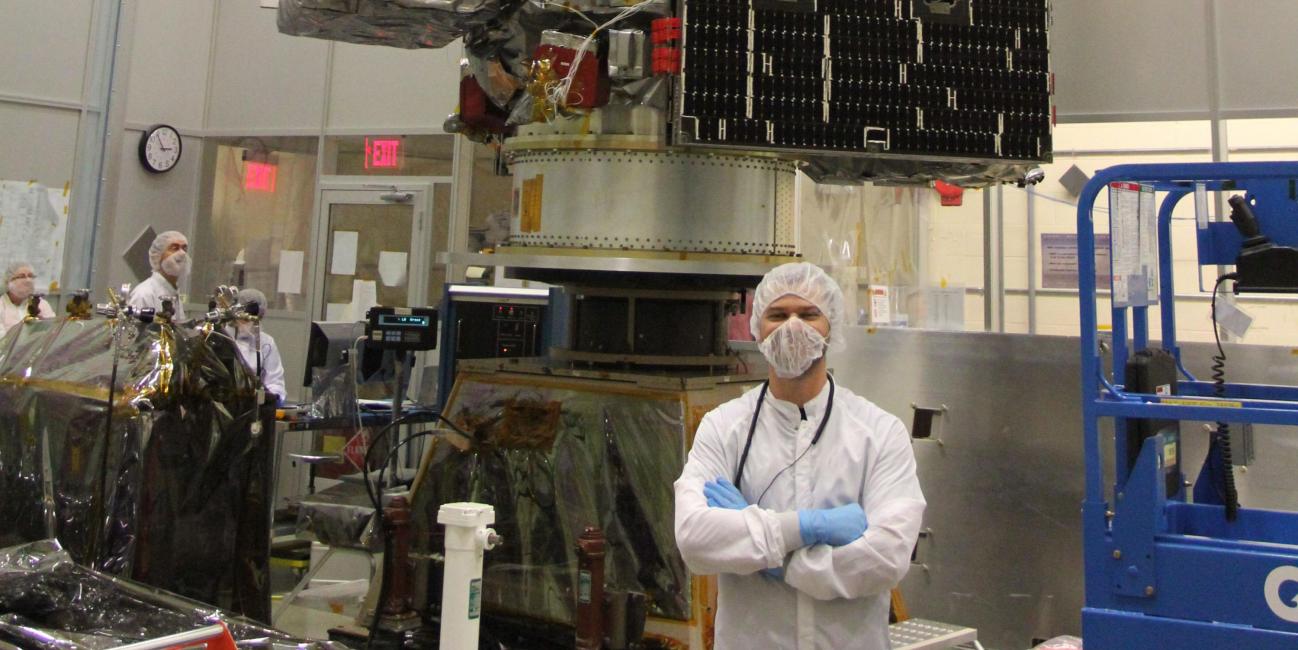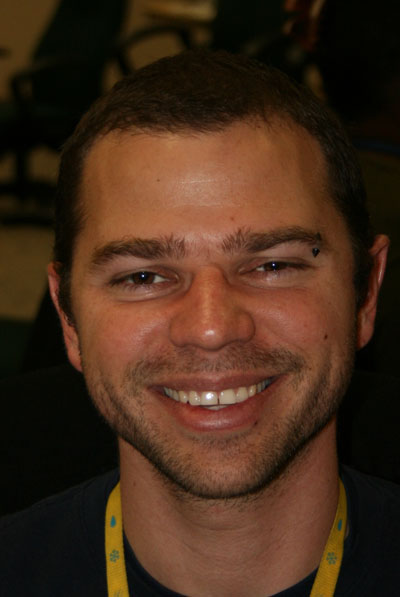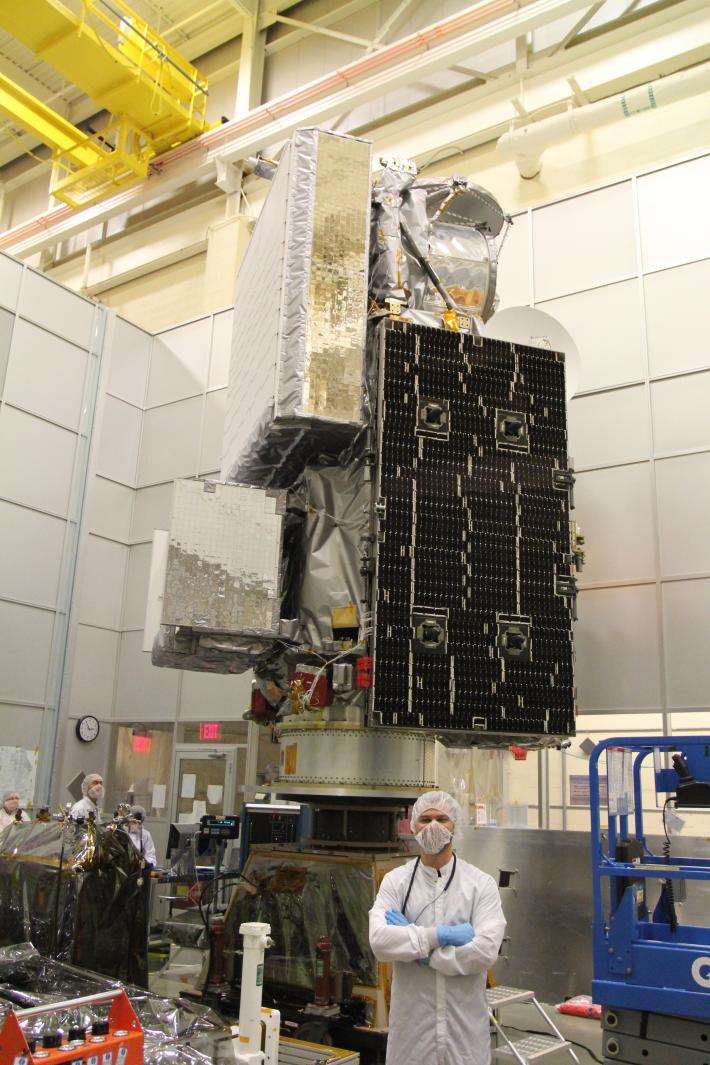
GPM's Traveling Companion to Japan
Name: Daniel E. Alvarado Varela
Title: Mechanical Engineer
Formal Job Classification: Aerospace Engineer
Organization: Code 543, Mechanical Engineering Branch, Engineering Directorate
Mechanical engineer Daniel Alvarado’s newest travel companion will be the 7,000-pound GPM satellite, which he will escort from Maryland to Tanegashima, Japan.
What do you do and what is most interesting about your role here at Goddard? How do you help support Goddard’s mission?
Although officially I am an aerospace engineer, my education is in mechanical engineering. I work on the Global Precipitation Measurement satellite project. GPM will measure rain, sleet, snow and hail around the globe to help develop better climate models. After launching in early 2014, GPM will give us enough data to create a new map of precipitation around the globe every three hours. These maps will be especially helpful for significant weather events such as hurricanes and tornados. Once we have better climate models, we can also help with crop planning.
Our mechanical engineering team is responsible for the structure of the spacecraft, which is basically the skeleton. It’s big. It’s about 16 feet long, 12 feet wide and 12 feet deep. The spacecraft weighs almost 7,000 pounds and the propellant will bring the total weight to around 8,000 pounds. GPM is one of the biggest satellites in recent years that is not a telescope.
I also help with the ground support equipment for moving the spacecraft. To move the spacecraft around Goddard, we use a huge dolly with air pads as “feet” which then “float” the spacecraft. To better understand that, picture an air-hockey table.
Right now, I’m concentrating on the logistics of transporting GPM to the launch site in Tanegashima, Japan. This coming November, the spacecraft will go by truck to an airport and then fly 16 hours, including a mid-air refuel, and land north of the launch site. The spacecraft will then take a two-day boat ride to the launch area where an army of mechanical engineers and technicians will be ready to help us unload.
We have a special container that has been used for other spacecraft. We barely fit it in there, but it does fit. Instead of packaging peanuts or bubble wrap, we will protect the spacecraft inside the box by using many special springs we call isolators.
I will fly with the spacecraft to monitor its health. Our team will bring specialized tools just in case we need them including a balancing sling, which we call the “pickle fork,” and a rotating sling, which can flip the spacecraft from horizontal to vertical and vice versa.
How long will you be in Japan?
Our team will be in Japan for about four months. Once we get to Japan, we will prepare the spacecraft for launch. I’ll help with the lifting of the spacecraft out of the container into the new clean room. We’ll also conduct several electrical tests. We will also prepare the very complicated rocket interface. I’ll be working on the last lift before we hand it off to the Japan Aerospace Exploration Agency and the launch vehicle lifting crew. I’ll be there for the launch too.
I was in Japan a few times before for GPM. I learned to speak a little Japanese, enough to get around on my own.
Why did you choose to become a mechanical engineer?
I’m very curious. I want to know how stuff works. I observe everything. I used to take apart things in the house that were already broken and then try to fix them, but I was not always successful in putting them back together. I like to see things and then figure them out. Mechanical engineering is very versatile and broad. You need to know a little bit about a lot of things, which compliments my natural tendency. I’m very visual and hands-on.
What are you most curious about?
Being curious means wanting to understand and know more about things and people. I ask a lot of questions, which sometimes annoys people, but I’m very interested in people. I enjoy talking to people about any topic and asking questions. I am fascinated by the thought process each person uses to reach a conclusion or perform an action, which is different for every person.
How do you reenergize at work?
If I have spent too much time staring at my computer, I just take a walk around our facility. Along the way, I can see the James Webb Space Telescope, the Magnetospheric Multiscale satellite, Discover and GPM. How many jobs are there where you can take a walk and see four spacecraft? I’ll see something I haven’t noticed before in the facility or on a satellite, or run into someone performing a test or an operation. I usually try to learn something from the operation or the people performing the task to use for my job. All this energizes me.
What is one of the coolest things you’ve done?
I loved the centrifuge test. It was the best! The centrifuge is a 60-foot metal structure that spins. For this test, I helped build a spacecraft mockup.
Mechanically, it was critical that the mockup weigh the same as the spacecraft – all 8,000 pounds including the water substituted for propellant. We conduct the centrifuge test to spin fast enough to achieve the force of the rocket. Just seeing how the centrifuge works is amazing! It’s my favorite facility. It takes tremendous force to move the centrifuge. It uses so much electricity to spin that we have to notify the electric company before using it. Once, when the Shuttle was flying, they asked us to postpone a test to avoid disrupting any communications from the Shuttle to Goddard. When we ended the test, we could still feel the wind blowing. It was so much fun!
What lessons or words of wisdom would you pass along to somebody just starting their career at Goddard?
Find the fun in everything you do. Learn from your children, or better yet, be a child: stay curious and ask a lot of questions. You can have fun while you learn something you didn’t know or rediscover something you forgot.
Is there something surprising about you, your hobbies, interests or activities outside of work that people do not generally know?
I tend bar some weekends. I used to work for the only Puerto Rican restaurant in D.C. We made a lot of mojitos, which is a Caribbean specialty. We also use a lot of parcha (passion fruit) and guayaba (guava). I love meeting a lot of people from all sorts of backgrounds and hearing their life stories. I learn from all of them. I am humbled by my coworker’s hard work, culinary and service knowledge, their struggles and their kindness. With the upcoming launch, I will take a break from bartending for a while.
Do you have any trips planned other than to Japan?
My niece is going to be born soon in Puerto Rico, my home. I plan on going back to Puerto Rico to meet her. I’m the youngest of three boys, so she will be the first girl in the family. My whole family is still in Puerto Rico. My family is huge. I have 84 first cousins on my dad’s side alone.
Are you a blogger?
In the fall of 2012, I wrote a few entries in Spanish on a blog about Earth science. I was very excited about the opportunity, especially because the Hispanic community at Goddard will be able to inspire future generation of Spanish-speaking explorers.
I hope to do more blogging soon, maybe another entry at this year’s Earth Science Week (en Español) and possibly a countdown to the GPM launch, in English and in Spanish.
Here are two links:
- http://climate.nasa.gov/esw2012espanol/blogs/?FuseAction=ShowBlog&NewsID=25
- http://climate.nasa.gov/esw2012espanol/blogs/index.cfm?FuseAction=ShowBlog&NewsID=26



